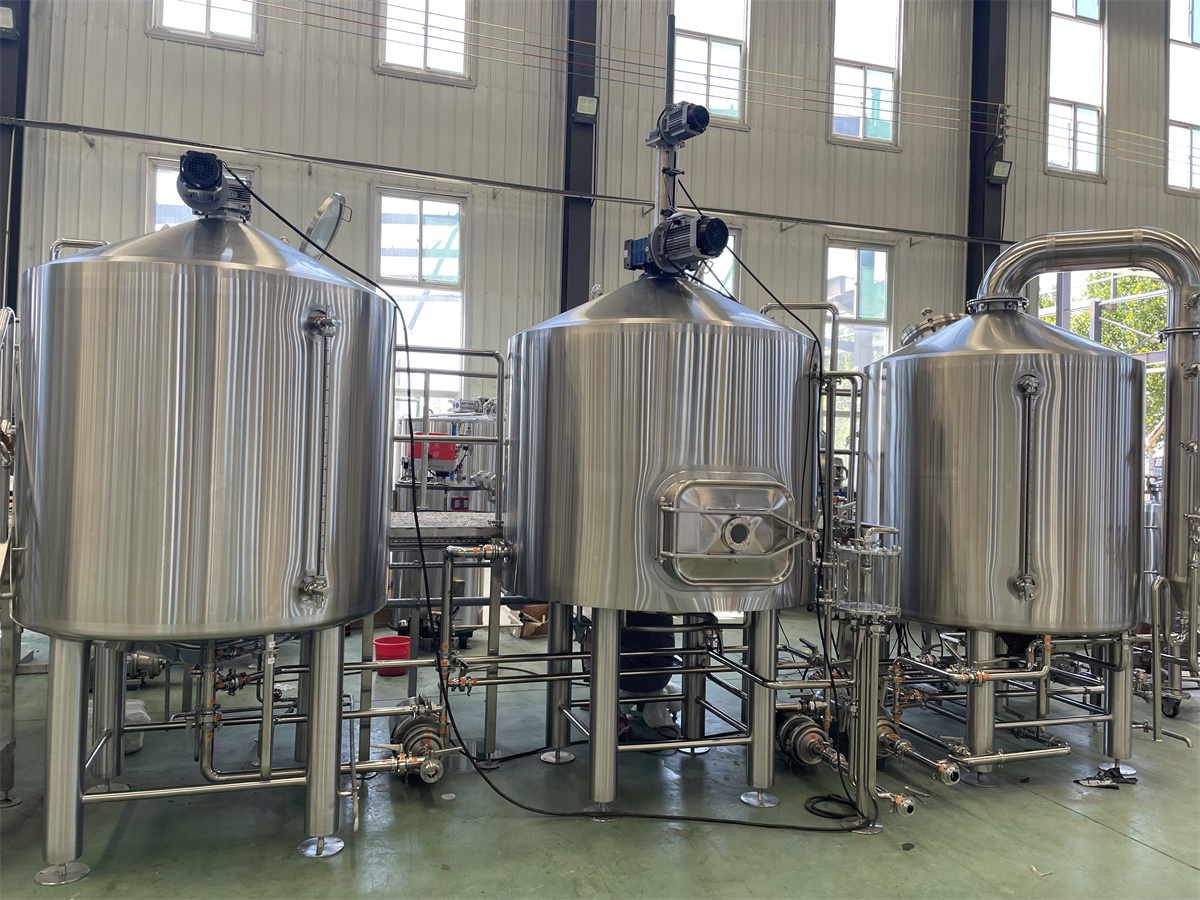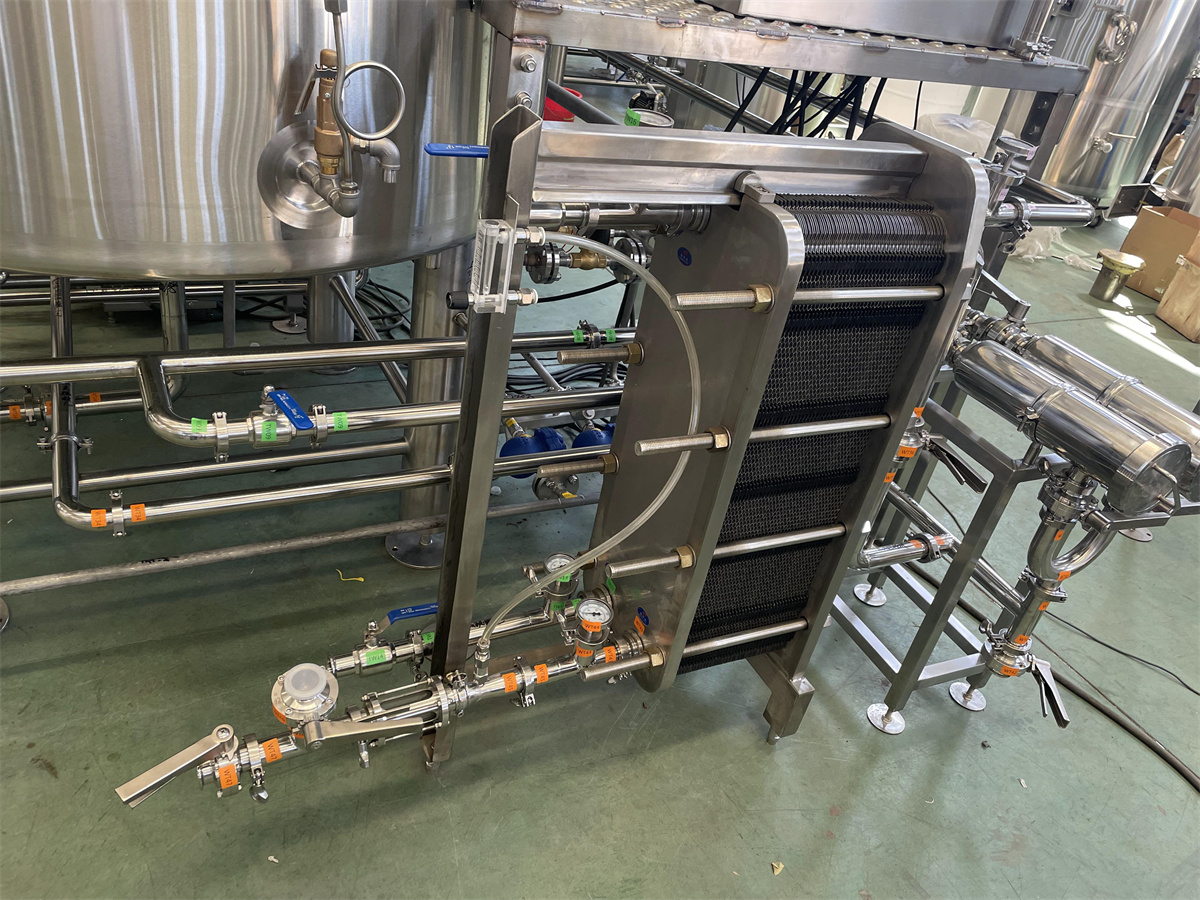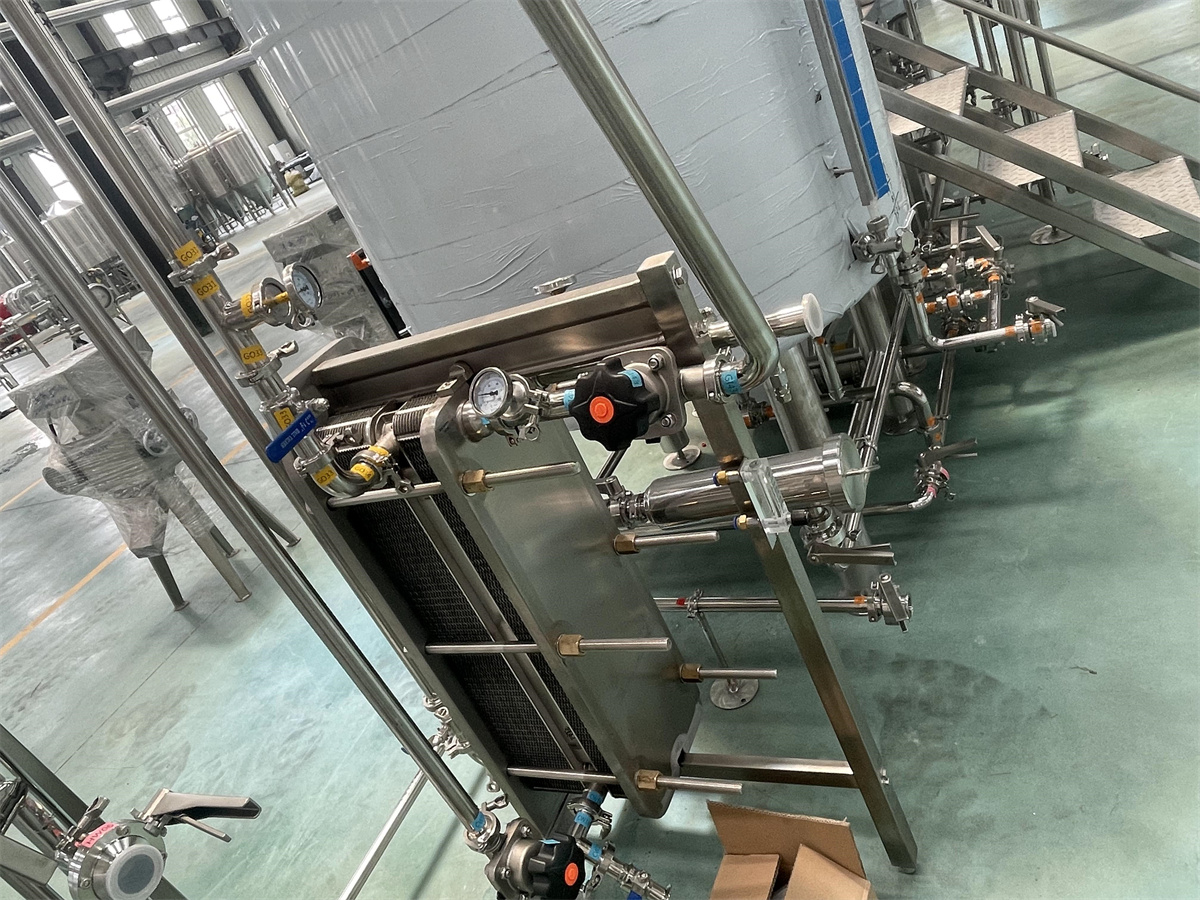Plate heat exchanger(short name: PHE) is used to lower or raise the temperature of beer liquid or wort as part of the beer brewing process. Because this equipment is fabricated as a series of plates, it can be referred to a heat exchanger, PHE or wort cooler.
During wort cooling, Heat exchangers must be related to the capacity of the brewing system, And PHE must have the capacity to cool a kettle batch down to fermentation temperature levels in around three quarters of an hour or less.
So, What Type or What’s the size of Heat Exchanger is Best For My Brewery?

There are many types of plate heat exchangers for wort cooling. Choosing a suitable plate heat exchanger can not only save a lot of energy consumption caused by refrigeration, but also control the temperature of wort very conveniently.
There are currently two options for plate heat exchangers for wort cooling: one is a single-stage plate heat exchanger. The second is Two-Stage.
I: single-stage plate heat exchanger
The single-stage plate heat exchanger uses only one cooling medium to cool the wort, which saves many pipes and valves and reduces the cost.
The internal structure is simple and the price is relatively cheap.
The cooling media used in single-stage plate heat exchangers are:
20℃tap water: This medium cools the wort to around 26℃, suitable for high fermentation
temperature beers.
2-4℃cold water: This medium can cool the wort to about 12℃, which can meet the fermentation temperature of most beers, but to prepare cold water, it’s necessary to configure an ice water tank with 1-1.5 times the volume of the wort, and prepare cold water at the same time Need to consume a lot of energy.
-4℃Glycol water: This medium can cool the wort to any temperature required for beer fermentation, but the temperature of Glycol water will rise to about 15-20℃ after heat exchange, which will affect the temperature control of fermentation . At the same time, it will consume a lot of energy.

2.Double-stage plate heat exchanger
The double-stage-plate heat exchanger uses two cooling media to cool the wort, which has many pipes and relatively high cost.
The internal structure of this type of plate heat exchanger is complex, and the price is about 30% higher than that of a single stage.
The cooling medium combinations used in the double-stage cold plate heat exchanger are:
20℃ tap water & -4℃ Glycol water: This combination method can cool the wort to any fermentation temperature what you want, and the treated tap water can be heated to 80℃ after heating exchanger. Glycol water is heated to 3~5°C after heat exchange. If brewing ale, do not cool with Glycol water.
3℃cold water & -4℃Glycol water: This combination method can cool the wort to any fermentation temperature, but it consumes a lot of energy and needs to be equipped with a separate cold water tank.
-4℃Glycol water: This medium can cool the wort to any temperature required for beer fermentation, but the temperature of Glycol water will rise to about 15-20℃ after heat exchange, which will affect the temperature control of fermentation . At the same time, it will consume a lot of energy.
20°C tap water & 3°C cold water: This combination can cool the wort to any fermentation temperature. However, it is also necessary to configure a cold water tank with 0.5 times the volume of wort. High energy consumption for preparing cold water.
full pot of wort boiling3
To sum up, for craft breweries below the 3T/Per brewing system, we highly recommend to configure two-stage wort cooling plate heat exchangers and use a combination of 20°C tap water & -4°C Glycol water. It is the best choice in terms of energy consumption and process control of brewing temperature control.

Finallly, you can choose a right heating exchanger according to the tap water temp and beer fermenting temp.
Meanwhile, Plate heat exchangers are used in many areas of the brewery to heat up and cool down the beer liquid and also to chill/heat water. Heat exchangers are used in many food production processes where flash pasteurization is required. In a brewery, the beer is heated up quickly to pasteurize it, then it is held for a short period as it makes the journey through a network of pipes. Following this, the beer liquid temperature is rapidly decreased before it undergoes the next production stage.
Post time: Sep-04-2023

